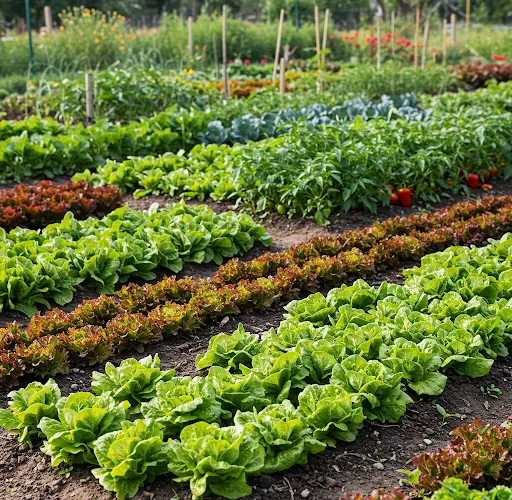What to Plant in March: Vegetables and Flowers for a Thriving Garden
March marks a turning point in the gardening calendar—nature begins to awaken, the days grow longer, and the soil starts to warm. For gardeners, this month is the signal to prepare for the upcoming growing season. It’s the perfect time to start sowing a variety of vegetables and flowers that thrive in early spring conditions.
If you’re aiming for a healthy, vibrant garden, getting a head start in March can make all the difference. From fast-growing greens to colorful blooms, here’s a comprehensive guide to what you can plant this month to ensure a productive and beautiful growing season.
Vegetables to Sow in March
March offers the right combination of increasing sunlight and cool temperatures that many hardy vegetables prefer. Whether you’re planting directly in the garden or starting seeds indoors, these are the top vegetables to consider:
1. Spinach
Spinach is a classic early-spring crop that thrives in cooler weather. It germinates quickly, even in slightly chilly soil, and matures rapidly—often ready to harvest in just a few weeks. Sow directly into the garden in rows or containers.
2. Lettuce
Lettuce is another early-season favorite. You can start seeds indoors, in a greenhouse, or sow them directly in the garden. Leaf varieties grow quickly and can be harvested multiple times, while head lettuces take a bit longer to mature.
3. Radishes
One of the fastest-growing vegetables, radishes can be harvested as early as three to four weeks after sowing. They prefer cool weather, making March the ideal time to start planting them.
4. Carrots
Carrots are slow to germinate but do best when planted early in the season. Sow seeds in loose, well-drained soil as soon as the ground is workable. With regular moisture and patience, your early spring planting will yield sweet, crunchy roots by early summer.
5. Peas
Peas love the mild temperatures of early spring and should be planted before the weather gets too warm. Sow seeds directly into the garden, and provide a trellis or support for climbing varieties.
6. Onions and Garlic
Both onions and garlic can be planted in March. Use onion sets or sow seeds directly. Garlic, often planted in fall, can also be planted in early spring in colder climates for a later harvest.
7. Parsley
Parsley is a bit slower to germinate, sometimes taking up to three weeks, but starting it now ensures a steady supply throughout the season. It can be grown indoors or outdoors, and its deep roots make it resilient once established.
8. Brassicas
This group includes cabbage, broccoli, cauliflower, and kale. These vegetables thrive in cooler weather and can be sown indoors or in protected areas like cold frames. Transplant them to the garden once the risk of hard frost has passed.
9. Tomatoes, Peppers, and Cucumbers (Start Indoors)
While these warm-season vegetables can’t be planted outdoors just yet, March is a great time to start seeds indoors. By the time late spring arrives, your seedlings will be ready for transplanting, giving you a head start on the growing season.
Flowers to Plant in March
A well-rounded garden isn’t just about vegetables—flowers bring beauty and beneficial insects. Here are a few great choices to sow or plant in March:
Marigolds
These vibrant flowers are not only attractive but also serve as natural pest repellents. Plant them around vegetable beds to help keep away harmful insects and improve soil health.
Violets
Violets are among the first flowers to bloom in spring. Their lovely scent and delicate appearance make them a delightful addition to garden borders or containers.
Calendula
Often mistaken for marigolds, calendula is another early bloomer with pest-repelling properties. It can help protect neighboring vegetables from nematodes and other soil pests.
A Fresh Start for Your Garden
March is one of the most important months for gardeners. It sets the foundation for the growing season ahead. By planting a mix of early vegetables and flowers, you not only ensure a steady harvest but also create a balanced ecosystem that supports pollinators and deters pests.
Whether you’re a seasoned gardener or just getting started, take advantage of the early spring energy to get your seeds in the ground. Keep a gardening journal or list to track what you plant and when—it helps avoid missed opportunities and ensures timely sowing.
With proper planning, patience, and care, your March plantings will reward you with healthy, productive plants all season long.



